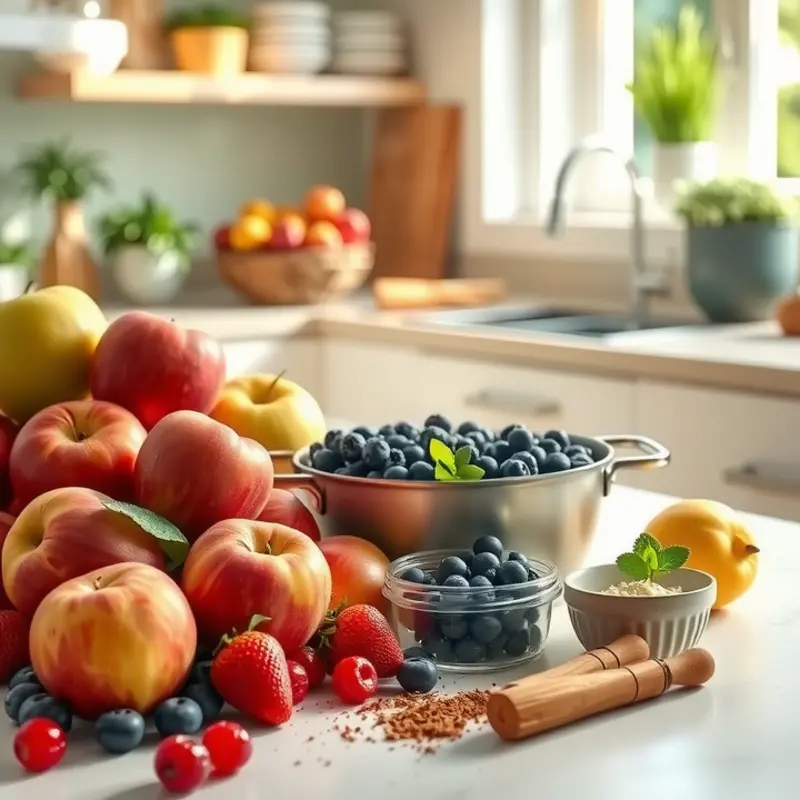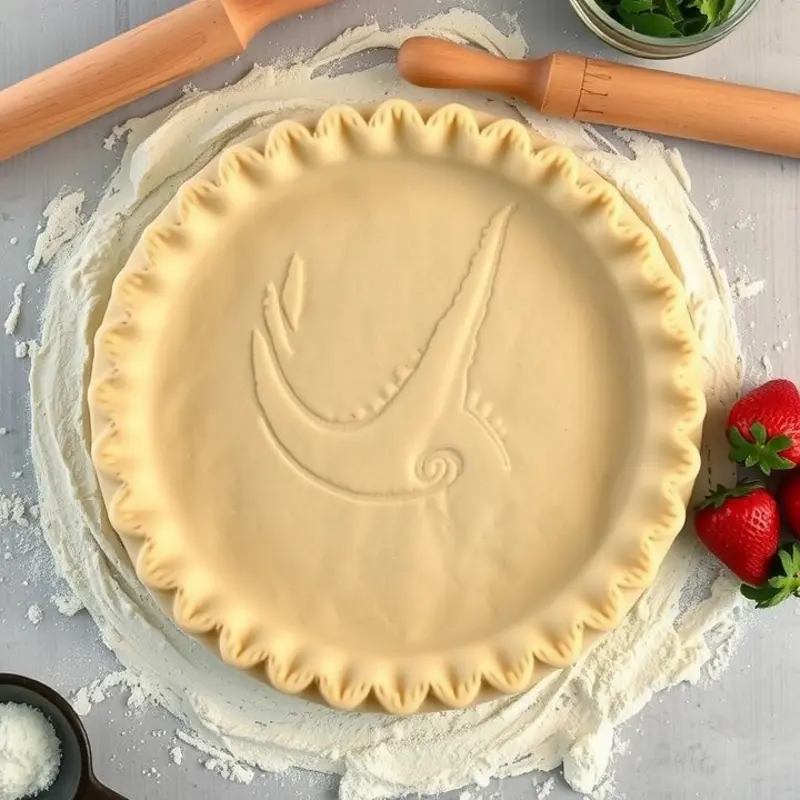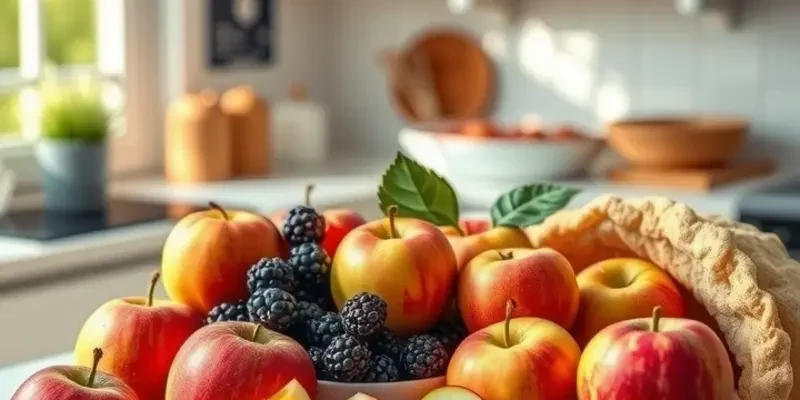Creating the perfect pie is both an art and a science, and one of the most frustrating pitfalls for home cooks is pie filling overflow. Whether you are crafting a classic apple pie or experimenting with a rich chocolate filling, knowing how to prevent spills and mess will enhance your baking experience. Here, we share practical tips that will help you keep your pie filling securely nestled within your crust, ensuring a beautiful presentation and a delicious end result.
Understanding Pie Filling Consistency

Creating a perfect pie starts with mastering the consistency of your filling. It’s a delicate balance; too runny, and the contents spill over, but too thick, and you sacrifice the tender juiciness that makes pie so appealing. Understanding how to achieve this balance is key to elevating your pastry game.
Consistency begins with the right choice and use of thickeners. Common thickeners include flour, cornstarch, tapioca, and arrowroot. Each has unique properties, affecting not only the texture but also the appearance and flavor of your pie filling.
Cornstarch is a popular choice because it thickens at a relatively low temperature, maintaining clarity in fruit fillings. However, overcooking can lead to a gummy consistency. On the other hand, flour is an accessible alternative that contributes a slightly opaque finish, best suited for cream-based or nut fillings. It’s essential to note that flour requires a bit more simmering to activate its thickening properties fully.
Tapioca, revered for its ability to gel with fruit juices without masking their vivid colors, is perfect for berry or stone fruit pies. Its beads create a glossy finish but ensure it’s finely ground to avoid a chewy texture. Arrowroot provides a similar glossy appearance with a neutral flavor, making it ideal for delicate custards.
Longevity and stability of your pie filling also depend on the correct application of these thickeners. A critical aspect to consider is hydration—mix your chosen thickener with either sugar or a minimal amount of liquid before combining it with the other ingredients. This process helps integrate the thickener smoothly, preventing clumping.
Equally important is the timing of adding your thickener. If you’re using cornstarch or flour, they should be stirred into the filling on the heat, allowing the mixture to come to a gentle simmer to activate the thickening agent. Tapioca and arrowroot require a gentler approach, as they tend to break down under prolonged heat, so incorporate them when the filling is off the heat, allowing the residual warmth to finish the process.
Achieving the right balance of flavor and thickness also involves considering the moisture content in your filling. Watery fruit, like berries, often require additional thickening due to their high juice content. Pre-cooking these fruits can help reduce liquid content, ensuring the thickener works efficiently.
For further insights on reducing moisture content and optimizing thickening substantively while minimizing waste, take a look at our section on safer storage of sauces.
With these principles in mind, you can tailor your filling consistency to suit your pie’s design and taste. Mastery of these techniques will ensure your pie is not only delicious but holds together beautifully with each slice.
Mastering the Art of Crust Preparation

Mastering the art of crust preparation is crucial for ensuring your pie filling remains securely contained. The crust acts as a fortress, preventing those luscious juices from escaping. Achieving an impeccable crust involves key practices such as chilling the dough, blind baking, and achieving the right thickness.
Firstly, chilling your dough is fundamental. The cold temperature helps the fat within the dough solidify, which in turn, leads to a flaky, melt-in-your-mouth texture. More importantly, it prevents shrinkage as the dough bakes. Wrap your dough tightly in plastic and let it rest in the fridge for at least an hour before rolling it out. Patience here pays off with a more manageable dough and a final product that’s less likely to leak.
Next, consider blind baking, especially if you’re working with particularly moist fillings, like custards or fresh fruits. This technique involves pre-baking the crust before adding your filling. Line the dough with parchment paper and fill with pie weights or dry beans to prevent puffing. Baking the crust this way creates a barrier that protects against soggy bottoms. For optimum results, bake at a higher temperature initially to set the crust. Then, lower the heat to finish it without burning.
Thickness also plays a pivotal role in preventing overflow. When rolling out your dough, aim for an even thickness of about 1/8 inch. This thickness provides sufficient structure to hold the filling without collapsing under its weight. An overly thin crust might tear; too thick, and you risk an undercooked, doughy base. Gauge the thickness by eye or with a ruler if needed, but consistency is key across the pie.
Edge crimping is another technique to fortify your crust. It creates a strong seal, crucial for holding fillings inside as they heat and expand. There are various methods to explore, from a simple fork crimp to intricate lattice work. Each approach contributes to securing the filling while also enhancing the pie’s aesthetic appeal.
Finally, considering ingredient substitutions and adjustments can also enhance your crust preparation. If you’re looking for a healthier option or need to accommodate dietary preferences, experimenting with alternative flours or fats might be necessary. For those exploring this path, Easy Plant-Based Eating offers insightful guidance on maintaining flavor and texture. By understanding these elements, your crust can effectively resist leakage without compromising on taste.
By perfecting these methods, you’ll establish a sturdy, leak-proof crust that serves as the perfect foundation for your pie. With each step diligently followed, you not only safeguard your filling but also elevate the humble pie to a delectable work of art.
Final words
Pie making should be an enjoyable task, not a battle against overflowing filling. By understanding the importance of your filling’s consistency and mastering crust preparation techniques, you can significantly reduce the chances of overflow. Remember, a well-structured pie not only looks appealing but also enhances the flavor experience for everyone. Embrace these tips, experiment with your favorite fillings, and watch your pie-making skills flourish. With practice and these handy strategies, you’ll achieve perfect pies that meet everyone’s expectations.







